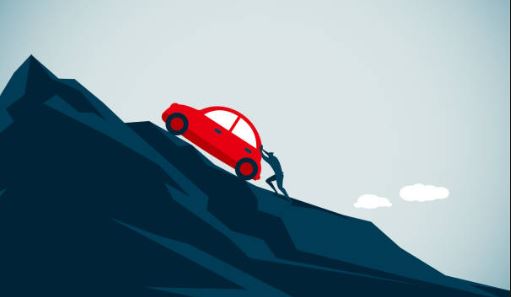How to do a Hill Start
Whether you are learning to drive or an experienced driver, understanding the start is important. If you’re learning to drive, it is vital that you are confident with the start of flat road before attempting to do a hill start.
What is a Hill start?
A Hill Start is exactly what the phrase says, moving your vehicle from a hill. This could be going up the hill or alternatively, starting down a hill. Learning to do a hill start can be frightening to say the least, if not done with correct supervision. Firstly, the learner driver needs good coordination between the foot and the hand controls. Secondly, there is gravity pulling you down.
Parking on a Hill
Before doing a hill start, you will normally find yourself having to stop on the hill in the first place. Stopping on a hill is an easy process. Simply stop as you would normally do. However, do not be too quick to remove your foot off the foot brake. Wait until the handbrake is fully applied. This may seem obvious but several learner drivers have been known to fail their driving test due to this reason alone.
How to do a Hill Start?
First, put the clutch to the floor and select first gear. Then lightly press the accelerator. This is commonly called the gas pedal. The usual amount of gas required is around 1500 rpm on the rev counter. However, for hills, you will need slightly more than this. Bring the clutch up to the biting point — you’ll know you’ve got the biting point because the engine sound will change slightly. The front bonnet will raise, the interior mirror will dip down. The car will feel as if it wants to move. Make the 6 point check, signal if necessary. You may want to recheck the right blind spot once move. Release the handbrake. If the handbrake is difficult to release, remember to lift it up and at the same time press the button in. This will make releasing the handbrake easier.
The Car Rolls Back
If after following the above method you find that your car still rolls back, there are two options. The car will usually rollback because you have not achieved the biting point. Therefore the first option is to slightly raise the clutch about the thickness of pound coin or two. This will connect the engine to the wheels and the car will start moving forward. The second option is to brake and to stop the car from rolling back. You will then have to repeat the process of doing the hill start once again.
Moving off downhill
Sometimes you may be required to move of downhill. This is actually easier as the car cannot roll back but you still need to make sure your vehicle doesn’t shoot down the hill at high speed. For a downhill start, select 1st gear unless the slope is very steep in which case the 2nd gear may be appropriate. Keep the foot brake firmly pressed and after the 6 point check, release the handbrake and take your foot off the brake. Even without the accelerator, the car will immediately start to roll forwards due to gravity.
During a hill start in an automatic car
Doing a hill start in an automatic car is easier because there is no clutch to worry about. Start as normal with your handbrake on and your gear in drive. Push gently down on the accelerator until you feel the car trying to move against the handbrake. When you feel this, release the handbrake and the car should start moving forward.

